#indian textile
Text

Svarna: Indian textiles collection
Explore Svarna to buy exclusive Indian textiles. Here we offer cotton and linen fabric, khadi cotton fabric, and more. Check out our collection now.
0 notes
Text
BEST 5 INDIAN TEXTILE
There are various types of textiles, each with its unique characteristics, uses, and manufacturing processes. Textiles can be classified into two primary categories: natural fibers and synthetic fibers. Here are some common types within each category:
Natural Fibers:
Cotton: Cotton is one of the most widely used natural fibers. It is soft, breathable, and comfortable to wear, making it a popular choice for clothing, bed linens, and towels.
Wool: Wool is derived from the fleece of sheep and other animals like goats (cashmere and mohair) and rabbits (angora). It is known for its warmth and insulating properties, making it suitable for sweaters, scarves, and winter clothing.
Silk: Silk is a luxurious natural fiber produced by silkworms. It has a smooth, shiny texture and is often used for high-end clothing items like silk dresses and ties.
Linen: Linen is made from the fibers of the flax plant. It is known for its breathability and natural cooling properties, making it suitable for summer clothing, bed linens, and tablecloths.
Hemp: Hemp fibers are derived from the hemp plant. They are strong, durable, and eco-friendly, often used in items like bags, ropes, and eco-friendly clothing.
Jute: Jute is a natural fiber commonly used to make burlap sacks and other coarse textiles. It is also used for making rugs and carpets.
Synthetic Fibers:
Polyester: Polyester is a versatile synthetic fiber known for its durability, wrinkle resistance, and quick-drying properties. It is used in various clothing items, including sportswear, and also in home textiles.
Nylon: Nylon is a strong and lightweight synthetic fiber. It is used in hosiery, activewear, swimwear, and various types of accessories like bags and backpacks.
Acrylic: Acrylic fibers mimic the softness and warmth of wool. They are often used in sweaters, blankets, and other cold-weather clothing items.
Spandex: Spandex is a highly elastic synthetic fiber known for its stretchability. It is commonly blended with other fibers to add elasticity to clothing items like leggings and swimsuits.
Rayon: Rayon is a semi-synthetic fiber made from wood pulp. It is known for its softness and breathability, making it suitable for various clothing items, including dresses and blouses.
Polypropylene: Polypropylene fibers are moisture-wicking and are often used in activewear, thermal underwear, and base layers.
For more information you can visit our home page huskituski.com
To read the full article click on Indian textile

0 notes
Text
Z in Indian women fashion
We have finally reached the end, does this mean the trends end here? No way. We already know that it keeps changing with time. But I know that you can find a lot of ideas from the posts here and give it your own twist and voila you may even bring out a trend sooner.For Z we are going to be exploring zari. Wait does that even need an introduction here in India? No right. A type of thread that is…
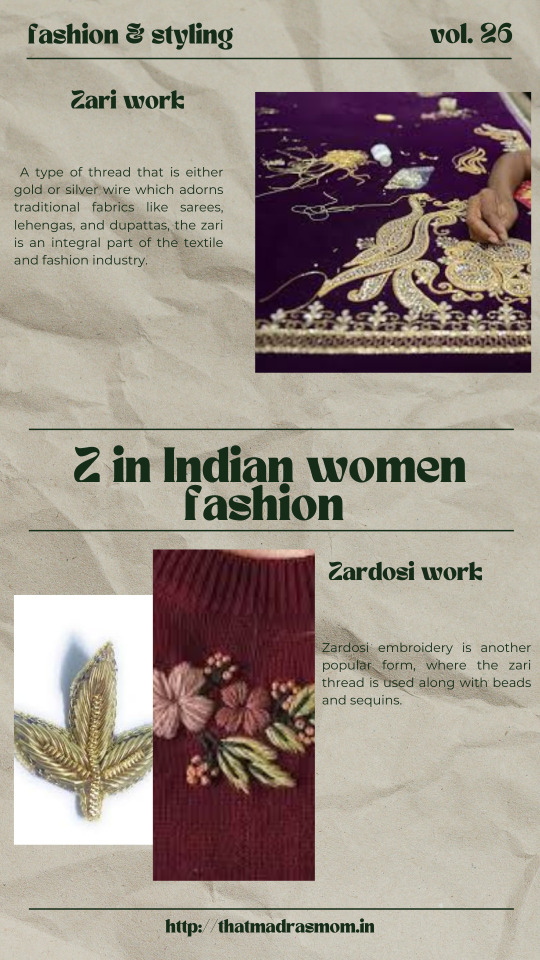
View On WordPress
1 note
·
View note
Text
Indian artistes transforming heirloom saris into chic quilts, jackets and dresses
The Rewrap Company
What started out as a thrift store for saris in 2021, has grown to include upcycling weaves into home accessories and table linen such as table cloths, placemats, table runners, coasters, cushion covers, and more. “We have also designed wine bags, Christmas ornaments and buntings,” says co-founder Deepa Balaji of the initiative run by a women-led team. Their most recent…
View On WordPress
#fashion#indian textile#jacket#Kopai Paar#Mae Studio#quilt#r2 Quilts#recycle#recyle saris#Sari#scrap#textile#The Rewrap Company#upcycle#upcycle saris
0 notes
Photo

Living Room - Contemporary Living Room
#Inspiration for a mid-sized contemporary formal and enclosed dark wood floor living room remodel with beige walls and no fireplace bookshelv#dark hardwood floors#tufted footstool#fabric stool#red cushions#indian textile#red accent
0 notes
Text
Indian textile and apparel market likely to reach US$ 250 billion by 2025-26
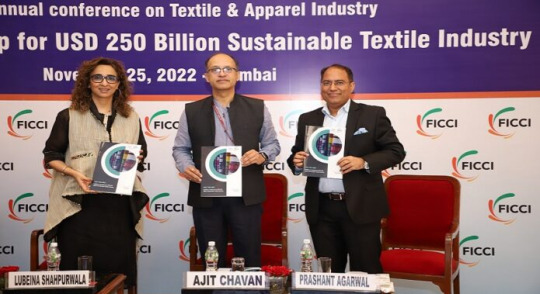
Adopting good regulatory practices, increased focus of quality, compliance issues with enhanced investments and continuous engagement with government key to achieve target: Ajit Chavan, Secretary Textile Committee, Ministry of Textiles, GoI
FICCI-Wazir Advisors today released a knowledge report 'Building a Roadmap for US$ 250 Billion Sustainable Textile Industry' during the FICCI TAG 2022 Annual Textile Conference.
The report highlights the key global trends, market scenarios, and opportunities for India in the textile and apparel market. It further elaborates on the key initiatives that India will need to achieve the target of US$ 250 billion by 2025-26 and build a sustainable industry going forward.
Global apparel consumption in 2021 is estimated to be around US$ 1.5 trillion and it is estimated to reach US$ 2 trillion by 2025. Global textile and apparel trade is around US$869 bn and expected to grow at 3.5% CAGR to reach US$ 1000 bn by 2025-26.
The report further states that the Indian textile & apparel market is estimated at US$ 153 bn in 2021, with the domestic market constituting US$ 110 bn and exports contributing US$ 43 bn. The Indian textile and apparel market has the potential to reach US$ 250 bn by 2025-26.
The report highlighted key global trends impacting the textile and apparel industry, which included a High focus on sustainability and circular fashion, the 'China+1' strategy of global brands providing an opportunity for countries like India to increase their export share, Increasing the need for digitalization across the fashion supply chain and Growing consumption of synthetic based textile and apparel.
The report suggested that to achieve the target of a US$ 250 billion market and build a sustainable textile industry going forward, Indian Industry needs to focus on leveraging government support schemes like PLI, PM MITRA, Export incentives, etc. to invest in new products, build the scale of operations, and improve competitiveness. The industry should also align with global buyer needs of sustainability, value chain traceability, and providing end-to-end services.
The report further suggested that Industry should also focus on automation and digitalization to improve processes and efficiency levels; bring a Strong focus on people and skill development, start leveraging FTAs to tap new markets; develop capabilities and build capacities in synthetic textiles and technical textiles and adopt global best practices for manufacturing excellence. The government should bring additional support to the existing textile clusters which will help build capabilities and allow MSMEs to compete globally, highlights the FICCI-Wazir Advisors report.
While addressing at 'FICCI TAG 2022', Mr. Ajit Chavan, Secretary and CEO, of Textile Committee, Govt of India said that adopting good regulatory practices, sustainable chemistry, increased focus of quality and compliance issues, coupled with enhanced investments and continuous dialogue and engagement with the government are key mantras for achieving 250 billion USD target of Sustainable Textiles market in India by 2025-26.
He also suggested that the state government's Textile Policy should include parameters of Quality and Compliance beyond incentives.
Ms. Lubeina Shahpurwala, Member, FICCI and Co-Founder, Mustang Enterprises, said, "Innovation and efficiency will be the key pillars for Indian textile businesses to further enhance their footprint in global textile & apparel markets. Identify global best practices in the sector and encouraging adoption to improve efficiency and competitiveness."
Mr. Rahul Mehta, Chief Mentor, CMAI, said that India can achieve the US$ 250 billion target easily by focusing on the Indian domestic textile and apparel industry and increasing the per capita consumption of consumers. He also stressed on the aspect of sustainability should be incorporated in the Textile policy.
Mr. Prashant Agarwal, Co-founder of Wazir advisors said that the Industry in confident of achieving the US$ 250 billion target. The key is to focus of creating own brand positioning, focus on investments and training. It will lead to investment by big players and MSME, as both will co-exist.
https://textilesouthasia.com/wp-content/uploads/2022/11/IMG_9681.jpg
0 notes
Text
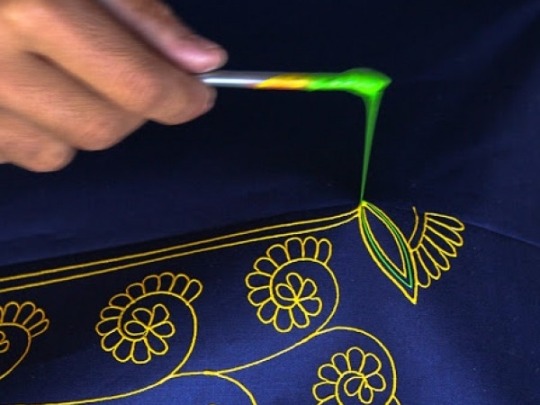
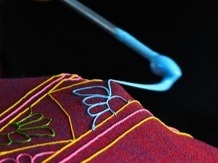
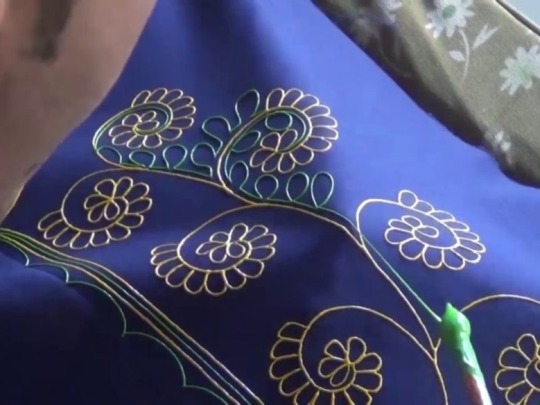


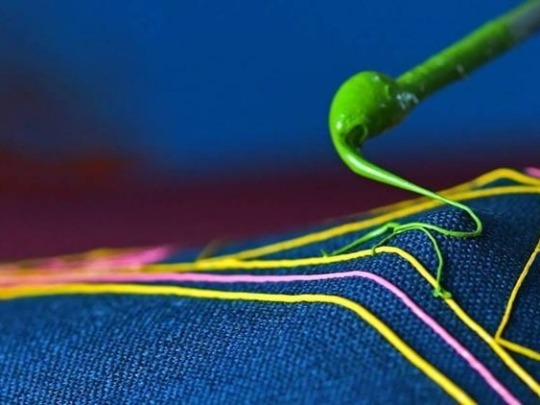


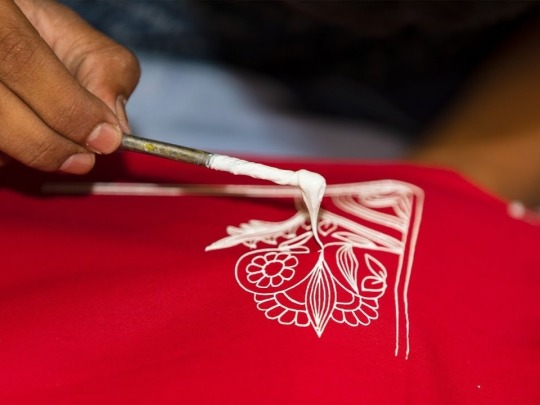

Rogan is an technique of cloth printing practiced in the Gujarat, Peshawar and Sindh regions of India and Pakistan. The word rogan has roots in both Persian and Sanskrit, meaning oil. In this craft, paint is made from boiled castor oil or linseed oil and vegetable dyes is laid down on fabric using a stylus.
The process of applying this oil based paint to fabric was developed among the Khatri community in Gujarat and the techniques of preparing and applying dyes was passed down in the family. As rogan printed cloth tended to be less expensive than other heavily embroidered garments but could still produce the illusion of embroidery, it was the wedding garment of choice for women from poorer families. The craft nearly died out in the late 20th century with the availability of cheaper and machine-made textiles. However, it is currently being revived mostly due to the efforts of the artist Abdulgafur Khatri and his family, who work tirelessly to spread awareness about Rogan art and teach it to young people, mostly young women from poor families in order to empower them by providing a means of livelihood as well as keeping the art of rogan alive.
1 / 2 / 3 / 4 / 5 / 6 / 7 / 8 / 9 / 10 / 11 | textile series
#ots#textiles#indian textiles#textile history#textile art#art printing#rogan art#gujarat#india#pakistan#south asia#desi tumblr#desiblr#sindh#peshawar#desi tag
1K notes
·
View notes
Text

Unknown, Embroidered Pillow Cover
North India
17th-early 18th century
cotton embroidered with silk
676 notes
·
View notes
Note
How did cotton win over linen anyway?
In short, colonialism, slavery and the industrial revolution. In length:
Cotton doesn't grow in Europe so before the Modern Era, cotton was rare and used in small quantities for specific purposes (lining doublets for example). The thing with cotton is, that's it can be printed with dye very easily. The colors are bright and they don't fade easily. With wool and silk fabrics, which were the more traditional fabrics for outer wear in Europe (silk for upper classes of course), patterns usually needed to be embroidered or woven to the cloth to last, which was very expensive. Wool is extremely hard to print to anything detailed that would stay even with modern technology. Silk can be printed easily today with screen printing, but before late 18th century the technique wasn't known in western world (it was invented in China a millenium ago) and the available methods didn't yeld good results.
So when in the late 17th century European trading companies were establishing trading posts in India, a huge producer of cotton fabrics, suddenly cotton was much more available in Europe. Indian calico cotton, which was sturdy and cheap and was painted or printed with colorful and intricate floral patters, chintz, especially caught on and became very fashionable. The popular Orientalism of the time also contributed to it becoming fasionable, chintz was seen as "exotic" and therefore appealing.
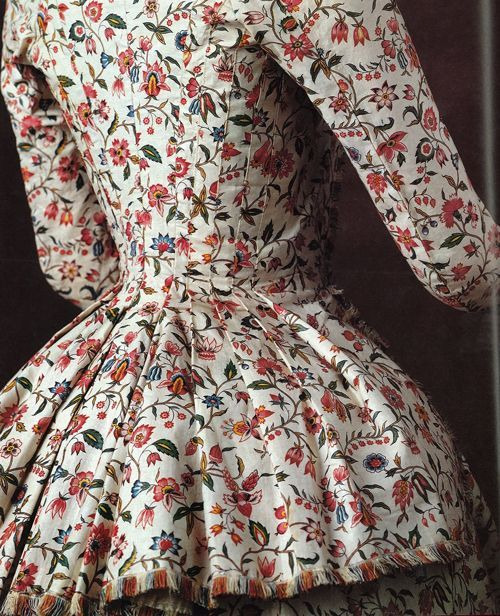
Here's a typical calico jacket from late 18th century. The ones in European markets often had white background, but red background was also fairly common.
The problem with this was that this was not great for the business of the European fabric producers, especially silk producers in France and wool producers in England, who before were dominating the European textile market and didn't like that they now had competition. So European countries imposed trade restrictions for Indian cotton, England banning cotton almost fully in 1721. Since the introduction of Indian cottons, there had been attempts to recreate it in Europe with little success. They didn't have nearly advanced enough fabric printing and cotton weaving techniques to match the level of Indian calico. Cotton trade with India didn't end though. The European trading companies would export Indian cottons to West African market to fund the trans-Atlantic slave trade that was growing quickly. European cottons were also imported to Africa. At first they didn't have great demand as they were so lacking compared to Indian cotton, but by the mid 1700s quality of English cotton had improved enough to be competitive.
Inventions in industrial textile machinery, specifically spinning jenny in 1780s and water frame in 1770s, would finally give England the advantages they needed to conquer the cotton market. These inventions allowed producing very cheap but good quality cotton and fabric printing, which would finally produce decent imitations of Indian calico in large quantities. Around the same time in mid 1700s, The East Indian Company had taken over Bengal and soon following most of the Indian sub-continent, effectively putting it under British colonial rule (but with a corporate rule dystopian twist). So when industrialized English cotton took over the market, The East India Company would suppress Indian textile industry to utilize Indian raw cotton production for English textile industry and then import cotton textiles back to India. In 1750s India's exports were mainly fine cotton and silk, but during the next century Indian export would become mostly raw materials. They effectively de-industrialized India to industrialize England further.
India, most notably Bengal area, had been an international textile hub for millennia, producing the finest cottons and silks with extremely advance techniques. Loosing cotton textile industry devastated Indian local economies and eradicated many traditional textile craft skills. Perhaps the most glaring example is that of Dhaka muslin. Named after the city in Bengal it was produced in, it was extremely fine and thin cotton requiring very complicated and time consuming spinning process, painstakingly meticulous hand-weaving process and a very specific breed of cotton. It was basically transparent as seen depicted in this Mughal painting from early 17th century.
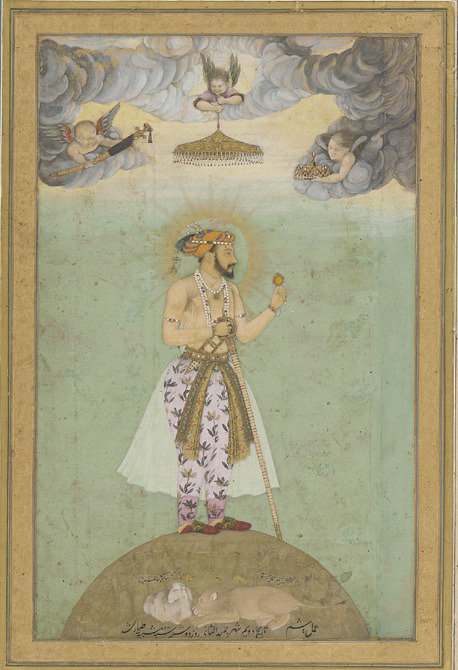
It was used by e.g. the ancient Greeks, Mughal emperors and, while the methods and it's production was systematically being destroyed by the British to squash competition, it became super fashionable in Europe. It was extremely expensive, even more so than silk, which is probably why it became so popular among the rich. In 1780s Marie Antoinette famously and scandalously wore chemise a la reine made from multiple layers of Dhaka muslin. In 1790s, when the empire silhouette took over, it became even more popular, continuing to the very early 1800s, till Dhaka muslin production fully collapsed and the knowledge and skill to produce it were lost. But earlier this year, after years lasting research to revive the Dhaka muslin funded by Bangladeshi government, they actually recreated it after finding the right right cotton plant and gathering spinners and weavers skilled in traditional craft to train with it. (It's super cool and I'm making a whole post about it (it has been in the making for months now) so I won't extend this post more.)


Marie Antoinette in the famous painting with wearing Dhaka muslin in 1783, and empress Joséphine Bonaparte in 1801 also wearing Dhaka muslin.
While the trans-Atlantic slave trade was partly funded by the cotton trade and industrial English cotton, the slave trade would also be used to bolster the emerging English cotton industry by forcing African slaves to work in the cotton plantations of Southern US. This produced even more (and cheaper (again slave labor)) raw material, which allowed the quick upward scaling of the cotton factories in Britain. Cotton was what really kicked off the industrial revolution, and it started in England, because they colonized their biggest competitor India and therefore were able to take hold of the whole cotton market and fund rapid industrialization.
Eventually the availability of cotton, increase in ready-made clothing and the luxurious reputation of cotton lead to cotton underwear replacing linen underwear (and eventually sheets) (the far superior option for the reasons I talked about here) in early Victorian Era. Before Victorian era underwear was very practical, just simple rectangles and triangles sewn together. It was just meant to protect the outer clothing and the skin, and it wasn't seen anyway, so why put the relatively scarce resources into making it pretty? Well, by the mid 1800s England was basically fully industrialized and resource were not scarce anymore. Middle class was increasing during the Victorian Era and, after the hard won battles of the workers movement, the conditions of workers was improving a bit. That combined with decrease in prices of clothing, most people were able to partake in fashion. This of course led to the upper classes finding new ways to separate themselves from lower classes. One of these things was getting fancy underwear. Fine cotton kept the fancy reputation it had gained first as an exotic new commodity in late 17th century and then in Regency Era as the extremely expensive fabric of queens and empresses. Cotton also is softer than linen, and therefore was seen as more luxurious against skin. So cotton shifts became the fancier shifts. At the same time cotton drawers were becoming common additional underwear for women.
It wouldn't stay as an upper class thing, because as said cotton was cheap and available. Ready-made clothing also helped spread the fancier cotton underwear, as then you could buy fairly cheaply pretty underwear and you didn't even have to put extra effort into it's decoration. At the same time cotton industry was massive and powerful and very much eager to promote cotton underwear as it would make a very steady and long lasting demand for cotton.
In conclusion, cotton has a dark and bloody history and it didn't become the standard underwear fabric for very good reasons.
Here's couple of excellent sources regarding the history of cotton industry:
The European Response to Indian Cottons, Prasannan Parthasarathi
INDIAN COTTON MILLS AND THE BRITISH ECONOMIC POLICY, 1854-1894, Rajib Lochan Sahoo
#i have fixed the wording in the beginning so it doesn't sound like i'm saying cotton in general dyed better than wool or silk#answers#fashion history#historical fashion#history#textile history#dress history#historical clothing#indian history#colonial history#indian textiles#cotton#slavery
2K notes
·
View notes
Text

Textile (India) - 18th century.
201 notes
·
View notes
Text

Brighton & Hove News, 28 July 2023:
'A Brighton family have literally stopped traffic with a new mural inspired by a sari pattern on their new home.
Poppy Jaman and Jaan Madan moved to Southampton Street in Hanover in January, and immediately knew they wanted to make a splash when decorating the outside.
She said: “One of the reasons we wanted to move to the centre of Brighton is that it’s so colourful.
“We were inspired by murals in Washington where there’s a whole area where there’s murals which have been created out of adversity.
“That inspired the idea of making a statement with our home. I wanted to not just paint something that I love. If you just love something that’s enough, but I also wanted to say here’s a bit of my identity.
“I collect saris and Jamdani is a signature saris of Bangladesh. It’s got a colonial past to it.

📷 X
The mural is inspired by the Jamdani weave saree, the signature saree of Dhaka, Bangladesh, which dates back at least as far back as 300BC.
Between the 16th and 19th centuries, Jamdani fabric – so fine it was known as ‘woven air’ – was one of the most highly coveted commodities in Mughal courts and further afield. However, by the mid-19th century, Jamdani had become almost extinct.
Poppy has written more about her relationship with the Jamdani design and its colonial history here.'
#sari#mural#brighton#mughal#textiles#textile history#jamdani#dhaka#bangladesh#colonial history#indian history#weave#woven fabric#pattern#surface pattern#surface pattern design#pattern design#textile design#surface decoration#street art#uk#england#british asian#saree#traditional crafts#traditional textiles#traditional clothing#bengali#weaving
124 notes
·
View notes
Text

damn if only there was a way to find out...
#im looking at an old book about textile patterns of the 'Indians of Mexico'#some of its funny because like. shit like this.#where white people believe native people to be some mythical other that they can never truly know about#and can only speculate on them
31 notes
·
View notes
Text
BEST 5 INDIAN TEXTILE
There are various types of textiles, each with its unique characteristics, uses, and manufacturing processes. Textiles can be classified into two primary categories: natural fibers and synthetic fibers. Here are some common types within each category:
Natural Fibers:
Cotton: Cotton is one of the most widely used natural fibers. It is soft, breathable, and comfortable to wear, making it a popular choice for clothing, bed linens, and towels.
Wool: Wool is derived from the fleece of sheep and other animals like goats (cashmere and mohair) and rabbits (angora). It is known for its warmth and insulating properties, making it suitable for sweaters, scarves, and winter clothing.
Silk: Silk is a luxurious natural fiber produced by silkworms. It has a smooth, shiny texture and is often used for high-end clothing items like silk dresses and ties.
Linen: Linen is made from the fibers of the flax plant. It is known for its breathability and natural cooling properties, making it suitable for summer clothing, bed linens, and tablecloths.
Hemp: Hemp fibers are derived from the hemp plant. They are strong, durable, and eco-friendly, often used in items like bags, ropes, and eco-friendly clothing.
Jute: Jute is a natural fiber commonly used to make burlap sacks and other coarse textiles. It is also used for making rugs and carpets.
Synthetic Fibers:
Polyester: Polyester is a versatile synthetic fiber known for its durability, wrinkle resistance, and quick-drying properties. It is used in various clothing items, including sportswear, and also in home textiles.
Nylon: Nylon is a strong and lightweight synthetic fiber. It is used in hosiery, activewear, swimwear, and various types of accessories like bags and backpacks.
Acrylic: Acrylic fibers mimic the softness and warmth of wool. They are often used in sweaters, blankets, and other cold-weather clothing items.
Spandex: Spandex is a highly elastic synthetic fiber known for its stretchability. It is commonly blended with other fibers to add elasticity to clothing items like leggings and swimsuits.
Rayon: Rayon is a semi-synthetic fiber made from wood pulp. It is known for its softness and breathability, making it suitable for various clothing items, including dresses and blouses.
Polypropylene: Polypropylene fibers are moisture-wicking and are often used in activewear, thermal underwear, and base layers.
For more information, you can visit our home page huskituski.com
To read the full article click on Indian textile
1 note
·
View note
Text
U in Indian women fashion
The Indian women’s fashion trend depends on weaves and garments and how women carried themselves. Women in films whom I would say were the first role models we look up to even today for fashion inspiration. Though at times like today, we have social media at our fingertips, when we refer to a trend, we most often mention the name of the celebrity who sported it.
Urmila Matondkar
The ‘Rangeela’…

View On WordPress
#ethnic wear#Indian fashion blog#Indian style#Indian textile#indian wear#Indian women fashion#uppada weave#urmila matondkar
1 note
·
View note
Text

Man's court sash (patka)
Indian (Golconda or Burhanpur, the Deccan) Mughal dynasty about 1700
Object Place: Deccan: Golconda or Burhanpur, India
Cotton plain weave, block-printed; hand-painted and mordant and resist-dyed, with metal-wrapped thread fringe
25 notes
·
View notes
Text

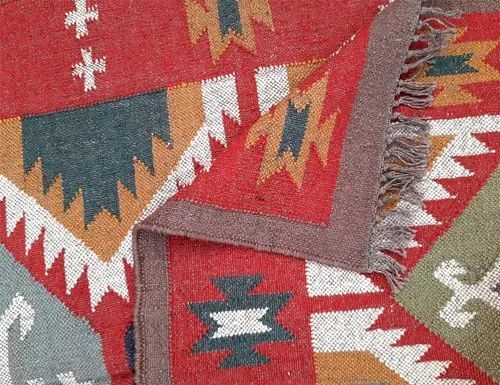

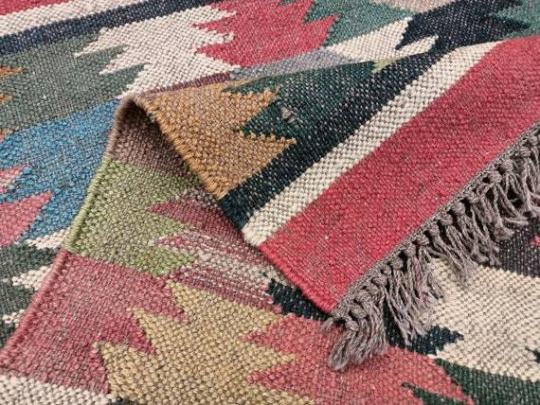




Panja is a weaving technique from Haryana in India. It is mostly used for weaving light rugs called dhurries. It gets its name from a claw-like tool called panja which is used to beat the weft threads into the warp to adjust them there. Panja rugs are famous for their lightness and portability. They are made from cotton or wool or jute. The designs are usually geometric. In the past, when these rugs adorned the palaces of Rajasthan the designs were more elaborate and resembled Persian rugs, however, over time as demands increased and rugs became common for household use, the designs simplified into the distinct geometric form they are recognised for today.
1 / 2 / 3 / 4 / 5 / 6 / 7 / 8 | textile series
#textiles#textile art#ots#weaving#haryana#india#indian art#crafts#peoplehood#panja#panja weave#carpets and rugs#rugs#interiors
195 notes
·
View notes